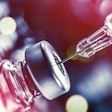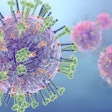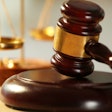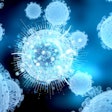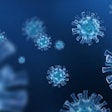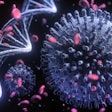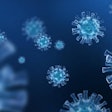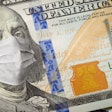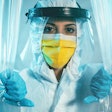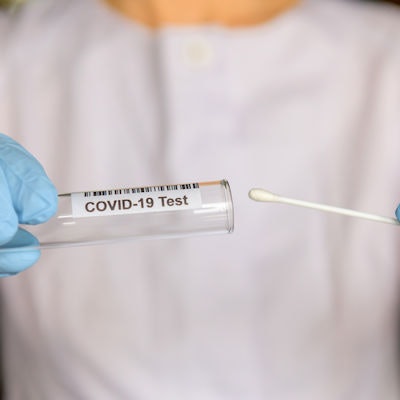
Testing oropharyngeal secretions for SARS-CoV-2 resulted in fewer false-negative results among patients who seemed to have recovered from the infection, compared with nasal-sample testing, according to a small study published on July 2 in the Journal of Dental Research.
The researchers compared nucleic acid amplification testing (NAAT) of nasal swab samples versus oropharyngeal secretions and found a higher risk for sending home patients who still had the coronavirus infection with the nasal specimens.
"Although [oropharyngeal secretion] sampling improves the accuracy of SARS-CoV-2 nucleic acid testing, it has to be emphasized that this conclusion is based on a very small sample size," wrote the authors, led by Jingzhi Ma, DDS, PhD, of Huazhong University of Science and Technology in Wuhan, China.
"Detection of viral RNA from a patient's secretions is not confirmative of viral infectivity," they added.
Managing postdischarge positives
Worldwide, there have been more than 11.8 million confirmed cases of COVID-19, including about 544,000 deaths, reported to the World Health Organization. In addition to recent surges in the U.S. and other countries, officials must also contend with those patients who have seemingly recovered from the virus and have been discharged from hospitals only to test positive again later.
Recurrent positive cases impede medical communities, health departments, and governing officials from managing COVID-19 effectively. Relatively high rates of false-negative results obtained from nucleic acid amplification detection via reverse transcription polymerase chain reaction (RT-PCR) tests, which have sensitivity levels of 66% to 80%, may partially contribute to the problem.
The accuracy of nucleic acid amplification testing is crucial for determining whether an individual should be discharged; a patient must have two negative results from this type of testing performed 24 hours apart before he or she can be discharged. Recent evidence has shown that more SARS-CoV-2 can be found in oropharyngeal than in nasopharynx secretions, so the authors opted to compare the two methods performed in nucleic acid amplification testing.
The first study included 75 COVID-19 patients who were set to be discharged and tested negative using two consecutive nucleic acid amplification tests of viral samples retrieved with nasopharyngeal swabs. Potential false negatives were detected in the first group, so oropharyngeal secretion and nasopharynx secretion samples were collected from 50 additional COVID-19 recruits who were in recovery for a second prospective study. The researchers compared the diagnostic value of the two viral RNA sampling methods.
Oropharyngeal secretions obtained from two of the 75 subjects in the first study yielded positive results for SARS-CoV-2. In the second study, oropharyngeal secretion samples were significantly more sensitive at detecting the virus than samples taken from the nose. Samples taken from the throat missed only 14% of positive cases, whereas those taken from the nose missed 59%, according to the authors.
Aside from the small sample size, limitations of the study included the lack of measurement of the specificity, or true-negative rate, in the second part of the study, the authors acknowledged.
Oropharyngeal sampling is simple and can be performed in any quarantine setting, with minimal contact between healthcare workers and patients. Compared with nasopharyngeal swab collection, oropharyngeal sampling is noninvasive and not uncomfortable, the authors wrote. Also, nasopharyngeal swabs are currently in demand, with shortages developing in the supply chain during the pandemic.
"The use of an alternative NAAT sampling method would be an immense relief for countries that are short of these sampling items," Ma and colleagues wrote.








